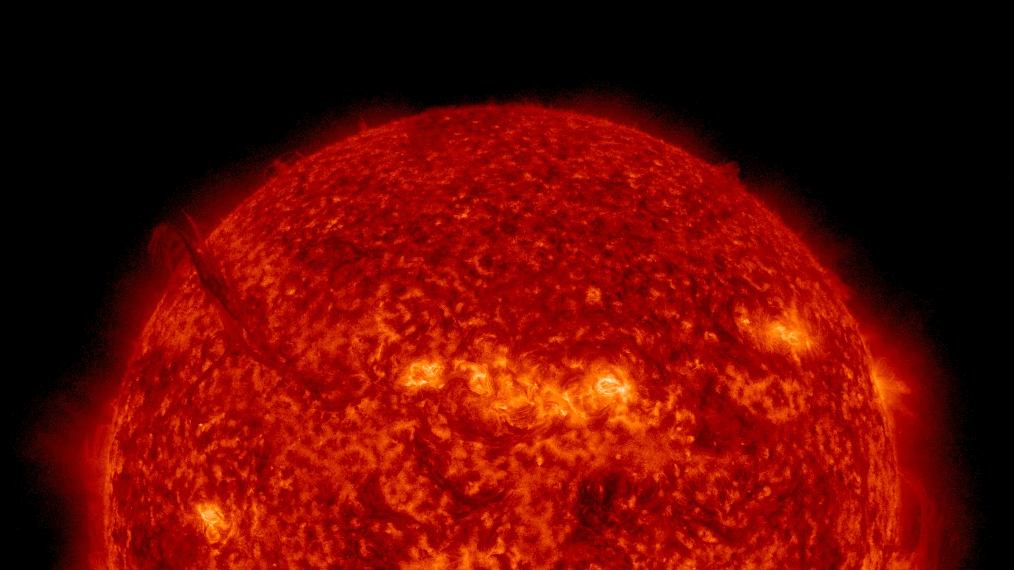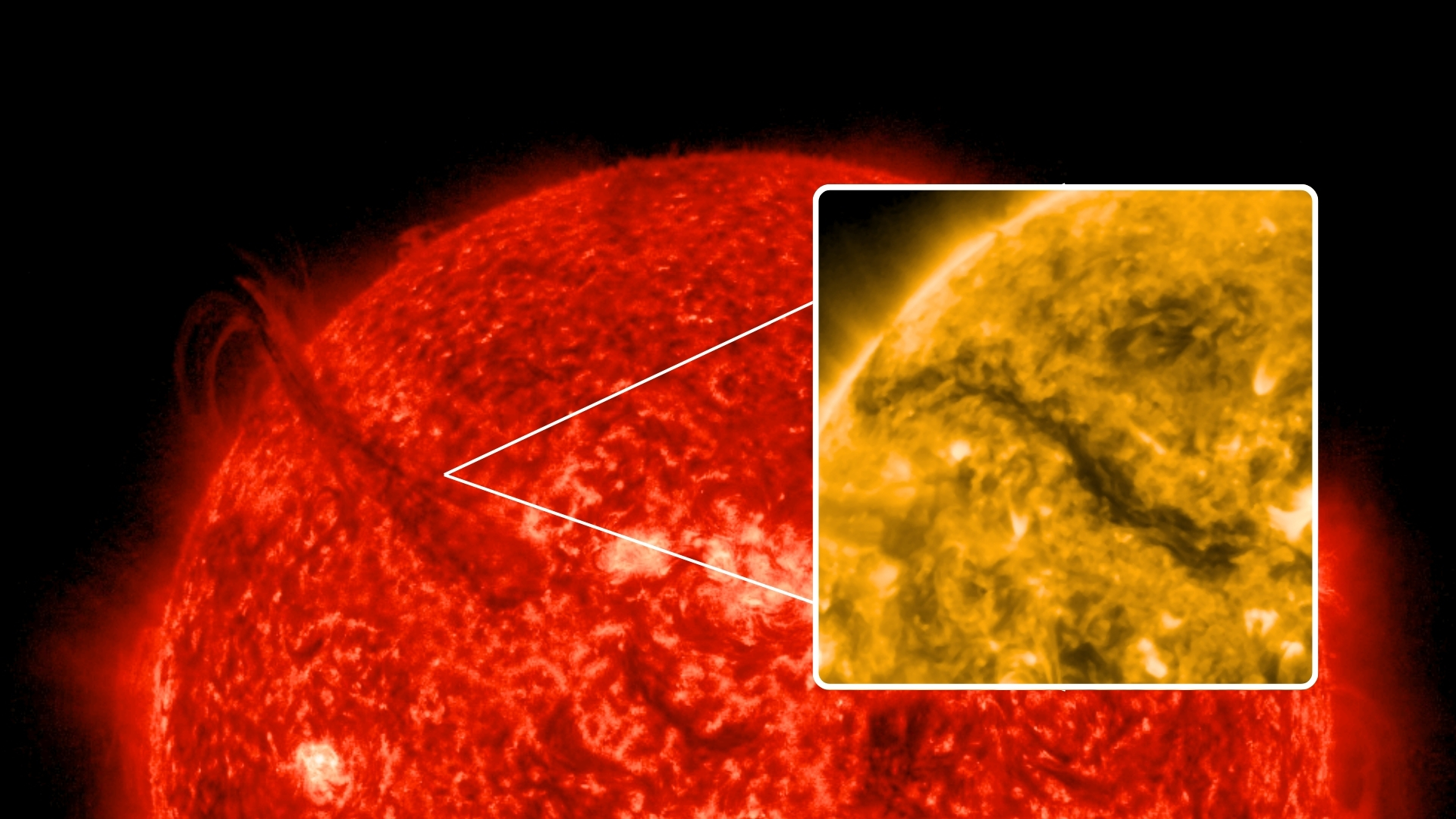On July 15, a colossal filament erupted from the sun’s northeastern limb, dramatically reshaping part of our star’s surface, albeit briefly, and unleashing a coronal mass ejection (CME) into space.
The outburst was so powerful that it carved a glowing trench of hot plasma more than 250,000 miles (about 400,000 kilometers) long, roughly the distance from Earth to the moon.
The explosive event was captured in stunning detail by NASA’s Solar Dynamics Observatory (SDO), showing the filament unraveling as solar material arcs and cascades through the sun’s atmosphere. As the filament collapsed, it left behind what some call a “canyon of fire,” with towering walls estimated to rise at least 12,400 miles (20,000 km) high, according to Spaceweather.com
These glowing rifts form when the sun’s magnetic field lines violently snap and realign after an eruption, leaving behind a searing hot trench of plasma that traces the reshaping magnetic field, according to NASA.
This fiery chasm isn’t just a visual spectacle. Filaments are cooler, dense ribbons of solar plasma that can hang suspended above the sun’s surface by magnetic fields, according to NOAA. When these become unstable, they can erupt dramatically, sometimes launching coronal mass ejections (CMEs) into space — powerful blasts of solar plasma and magnetic fields that can trigger geomagnetic storms here on Earth.

Coronagraph imagery from the Solar and Heliospheric Observatory (SOHO) and GOES-19 satellite suggests that while the filament eruption did release a CME, there is no Earth-directed component.
“The CME is heading away from Earth,” aurora chaser Vincent Ledvina wrote in a post on X. “Here is the CME in LASCO C2 (left) and CCOR-1 (right) which has a later frame of the CME further spread out. The front is traveling pretty slowly and away from Earth.”
Here is the CME in LASCO C2 (left) and CCOR-1 (right) which has a later frame of the CME further spread out. The front is traveling pretty slowly and away from Earth. pic.twitter.com/ljWWmThpGQJuly 15, 2025
You can keep up to date with the latest northern lights forecasts, alerts and geomagnetic storm warnings with our aurora forecast live blog.
